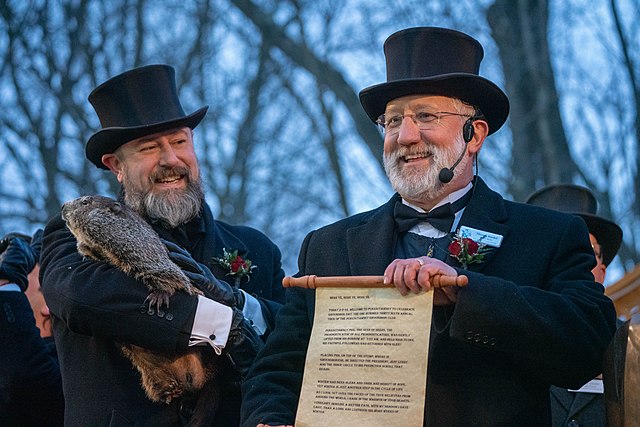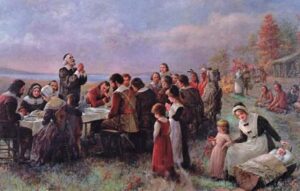Groundhog Day: A Quirky Tradition in North American Culture
Groundhog Day, which falls annually on February 2, is a unique North American tradition rooted in folklore and filled with charm and whimsy. The only two countries that celebrate Groundhog Day are the United States and Canada. In both countries, this is a day when the nation turns its attention to a furry meteorologist, the groundhog, to predict the arrival of spring. Though it may seem like a simple novelty, the origins, cultural significance, and festivities surrounding Groundhog Day offer an intriguing glimpse into North American history and collective spirit.
The History of Groundhog Day
The origins of Groundhog Day trace back to ancient weather lore from Europe. In particular, it evolved from the Christian celebration of Candlemas, which marked the midpoint between the winter solstice and the spring equinox. Candlemas featured traditions involving weather prediction, with sayings like, “If Candlemas Day be fair and bright, winter will have another flight.”
German immigrants brought this tradition to Pennsylvania in the 18th and 19th centuries. They substituted the North American groundhog for the European hedgehog as the weather prognosticator. The first official Groundhog Day in the United States was celebrated in 1887 in Punxsutawney, Pennsylvania. Groundhog Day came to Canada in 1956. Today, Punxsutawney Phil, the most famous groundhog of the US, and Canada’s Wiarton Willie, carry on the tradition, drawing thousands of visitors each year.
The Legend of Groundhog Day and Its Cultural Significance
The premise of Groundhog Day is simple but captivating. If the groundhog emerges from its burrow and sees its shadow, six more weeks of winter are predicted. If not, it signals an early spring. While there is no scientific basis for the groundhog’s predictions, the day serves as a lighthearted way to break up the monotony of winter and brings communities together. Americans and Canadians do not actually believe in the weather forecasting abilities of a ground-dwelling rodent. Instead, the holidays is about lighthearted fun.
Groundhog Day has become a symbol of folklore and fun in North American culture. It reflects a connection to nature and the changing seasons while showcasing a uniquely North American blend of humor and tradition. The day gained even greater cultural significance with the release of the 1993 film Groundhog Day, starring Bill Murray. The movie, in which a man relives the same day repeatedly, turned the holiday into a metaphor for self-reflection and transformation, further embedding it in popular culture.
Special Events and Celebrations
Punxsutawney, Pennsylvania, is the epicenter of Groundhog Day celebrations in the US. In Canada, that distinction belongs to Wiarton, Ontario. Each year, thousands of spectators gather at Gobbler’s Knob to witness the prediction of Punxsutawney Phil, the most famous American groundhog. The event begins early in the morning with fireworks, music, and entertainment, and it culminates in the groundhog’s ceremonial emergence. Phil’s handlers, members of the Punxsutawney Groundhog Club, dress in tuxedos and top hats, adding to the festive atmosphere. In Canada, similar festivities take place at Willie’s Burrow in Bluewater Park, on the Georgian Bay of Lake Huron.
Beyond Punxsutawney and Wiarton, towns across the United States and Canada host their own Groundhog Day celebrations. Some feature parades, pancake breakfasts, and even local groundhogs making their predictions. Schools and communities use the day as an opportunity to teach children about weather, folklore, and tradition, fostering a sense of curiosity and cultural heritage.
Many towns across the two countries refuse to give all of the spotlight to Punxsutawney Phil or Wiarton Willie. There are several rival groundhogs in different locations. New York City has Staten Island Chuck, officially known as Charles G. Hogg. (The name Chuck refers to the other word for groundhog, a woodchuck. Both names refer to the same animal, Marmota monax.) Georgia has General Beauregard Lee. There are also Buckeye Chuck of Ohio, Chattanooga Chuck of Tennessee, and Birmingham Bill of Alabama. In Canada, Wiarton Willie of Ontario is challenged by Fred la Marmotte of Québec or Shubenacadie Sam in Nova Scotia
Groundhog Day may not be the most conventional holiday, but its charm lies in its simplicity and sense of community. Whether your groundhog of choice forecasts an early spring or a prolonged winter, Groundhog Day reminds us to find joy in the small moments and to celebrate the traditions that bring us together.
Get on the road to better English with the Language Garage!
We hope you’ve enjoyed learning about the quirky holiday of Groundhog Day in the United States and Canada. If you’re interested in ESL/EFL lessons, please check out our English courses. We have private lessons, lessons for you and a friend or colleague, or small groups. Or see our other posts on English grammar, vocabulary, and more.
Image Source Wikimedia Commons






